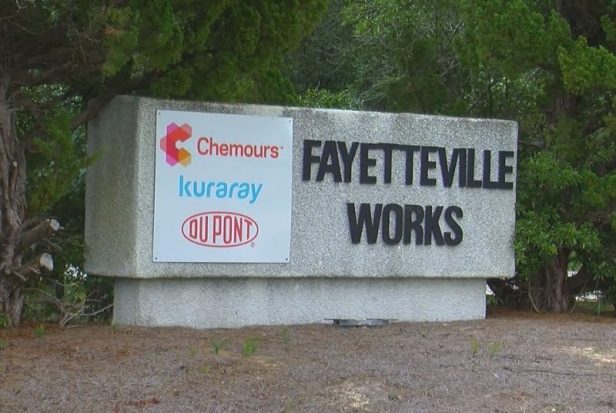How long will it take to rid PFAS from private wells?
By Greg Barnes | North Carolina Health News | April 7, 2020

Read the full article by Greg Barnes (North Carolina Health News)
“As more sampling is performed, the number of private drinking water wells found to be contaminated by GenX and other ‘forever chemicals’ continues to surge in an area surrounding the Chemours Fayetteville Works plant.
Figures from the state Department of Environmental Quality show that, as of mid-February, more than 2,500 homes in the contaminated area have qualified for water filtration systems provided by Chemours.
That number is up from 1,673 in early December.
People living in the area near Fayetteville, largely known as Gray’s Creek, have been fighting to get answers to their questions: What are these chemicals doing to my health? Can I eat vegetables from my garden? Will my property value plummet? Will this nightmare ever end?
For months, NC Health News has been asking readers to submit questions they’d like to see answered. One reader asked: ‘If Chemours were to stop polluting the air with Gen X, how long will these chemicals be able to contaminate wells?’
Unfortunately, there is no easy answer, although researchers at N.C. State and other universities are trying to find out.
David Genereux, a professor in N.C. State’s department of Marine, Earth and Atmospheric Sciences, is a leader in the study of groundwater contamination surrounding the Chemours plant, a sprawling chemical company near the border of Bladen and Cumberland counties.
The answer he provided for how long it will take for nature to flush per- and poly-fluoroalkyl substances — known collectively as PFAS — from the groundwater won’t sit well with homeowners whose wells are affected.
“We’re sorry we can’t give you a specific number for an individual well or individual place but you know, I think the timescale is on the order of at least a couple to three decades,” Genereux said. “We’re hoping that it’s not going to be much longer, a century or more.”
Good news?
But there is some good news, if one can call it that.
At the end of 2019, Chemours began operating a $100 million thermal oxidizer, essentially a gigantic, high-tech incinerator that the company says will eliminate 99.99 percent of airborne PFAS emissions.
Air travel is how GenX and other types of PFAS contaminated the wells in the first place. Chemours vented its operations through tall stacks. The PFAS were carried by the wind and fell with the rain. They have fouled water in wells as far as nine or 10 miles from the plant — perhaps even farther.
The thermal oxidizer — along with other measures Chemours is taking as the result of a February 2019 consent order — could go a long way toward stopping further PFAS pollution and eventually help flush the contamination out of the wells.
‘In theory,’ Genereux said, ‘there should now be clean rainwater infiltrating recharging groundwater.’
Even so, it will likely take decades before the wells are clear, and that doesn’t come close to solving the entire problem, he said.
‘You’d like the groundwater to be flushing out quickly,’ Genereux said. ‘Of course, it becomes another problem, somebody’s else’s problem downstream, when it’s flushed into the surface water.’
Not just well contamination
The contamination is not only in well water around Chemours, it’s downstream of the plant in the Cape Fear River, where an estimated 200,000 people draw their drinking water. Water utilities in New Hanover and Brunswick counties are each spending millions of dollars on new purification systems.
A corrective action plan, submitted by a consultant for Chemours in December, calls for at least a 75 percent reduction of PFAS loading into the Cape Fear River. Chemours no longer discharges its waste into the river. Instead, it ships it off-site.
That has led to a substantial reduction in PFAS in drinking water downstream – the level of GenX is now consistently well below the state health advisory of 140 parts per trillion. But the substance continues to get into the Cape Fear, largely through groundwater and seepage.
To reduce PFAS in the river by 75 percent will be no small task, considering levels detected in some monitoring wells are being measured in the thousands — if not millions — of parts per trillion…”
This content provided by the PFAS Project.
Location:
Topics: